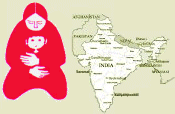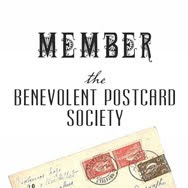A few days ago, someone named Grzegorz left a comment on the posting I have on “my” Polish airman, Alojzy Dreja. He told me that he could provide me with a little more information about Alojzy. This morning, he sent me information which fills out Alojzy’s wartime biography. Much thanks to Grzegorz!
Alojzy Baltazar Dreja was born on 1st of Jan 1918 in Przyszowice (small village in the vicinity of Katowice, south of Poland).
After he had passed his secondary school examinations in Rybnik he joined The School of Air Cadets (Szkoła Podchorążych Lotnictwa) in Dęblin which he graduated from as Air Observer in 1939.
In the September Campaign of 1939, he flew several sorties in reconnaissance flights as Air Gunner. He managed to get evacuated from Poland and via Romania, and from Beirut he got to France. In Andresieux (France) he was attending The Observers School between April and June 1940.
Then again he had to get evacuated to Britain.
Having completed his training as pilot in 18 Operational Training Unit he was posted to 300 (Polish) Bomber Squadron in September 1941. He managed to take part in 35 operations before completing his first operational tour.
Then, in July 1942, with the rank of Flying Officer he was posted to Bomber & Gunnery School in Pembrey where he had the chance to rest from operational flying. In April 1943, he started to attend Polish War Air Staff College which he graduated form in February 1944. From February to October 1944, he was a staff officer in Polish Air Forces Headquarters in Britain.
In the period between November 1944 and May 1947 he served as the teacher of Bombing Tactics in Polish War Air Staff College.
After his demobilization he finished studies on the London University. He lived in London [Surbiton, Surrey] where he died on 18th of Feb. 1986.
Pathe newsreels
“General Sikorski”
Various shots of General Sikorski inspecting Polish patriots who have joined the army and are now serving in Gibraltar. A few hours later Sikorski was to die. Polish destroyer arriving at British port. Various shots of the flag-draped coffin of General Sikorski being carried from destroyer. Several shots of the coffin laying in state at the Polish Government Headquarters in Kensington Palace Gardens – wreaths are laid.
Vodpod videos no longer available.
“Battle Colours for Polish Airmen”
Location unknown, somewhere in Britain. The camera pans across the first Polish squadron of the R.A.F. (Royal Air Force) a year after they were formed. Polish Prime Minister General Sikorski and Air Marshal Sir Charles Portal walk past them saluting. M/S as Sikorski greets an injured airman who is on a bed in the parade ground with his colleagues. M/S of Polish crest. Various shots as the Colours are handed over. Women take photographs of the bomber squadron. They march off with it.
Vodpod videos no longer available.
“Fighter Pilots Meet Bomber Crews”
Polish Club, London.Various shots of a reception given for the pilots of the Polish Fighter Squadron and the British and American bomber crews. Words of thanks are exchanged between Flying Officer Todobinski and Colonel Anderson (natural sound).
Vodpod videos no longer available.
“Bomber Squadron Of Our Allies”
Location of events unknown. M/S of RAF (Royal Air Force) men marching past. Various shots of a Polish bomber crew just prior to boarding their aeroplane. A British officer with map briefs them. GV Bomb train crossing the airfield. Various shots of the Polish crew climbing into their Wellington bomber. Various shots of pilot and gunners inside the plane. Panning shots of two Wellingtons taking off.Panning shots of group of Czech airmen. Narrator explains that many of the men were craftsmen in famous Skoda works. Various shots of bombs being loaded into a Wellington bomber. Various shots of crew climbing into their Wellington. C/U of the forward gun turret. Various shots of Wellingtons taking off.
Vodpod videos no longer available.





zeusiswatching said,
February 19, 2010 at 7:41 am
That makes perfect sense from the historical record too. A number of Polish aircrews were able to evacuate, with their aircraft to Romania. Some 20+ PZL23 Karas reconnaissance-bombers, three-seat aircraft, made the trip to Romania, changed livery and later served with distinction on the Eastern front against the USSR in the hands of Romanian airmen. I’d bet good money your airman was a crew member aboard one of these very aircraft.
http://en.wikipedia.org/wiki/PZL.23_Kara%C5%9B